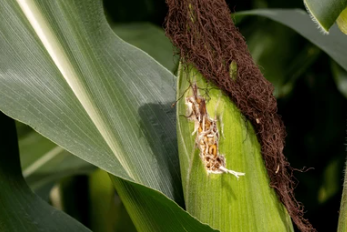Genetically modified crops are crops whose genomes have been modified using genetic engineering techniques to improve existing traits or introduce new traits that do not occur naturally in a particular crop species. Plants produced by inserting specific fragments of foreign nucleic acid/gene sequences into their genomes using transformation methods such as Agrobacterium-mediated transformation or direct gene transfer are called transgenic plants.
In 1977, the natural ability of Agrobacterium to stably insert Ti plasmid DNA (T-DNA) into the genome of host plant cells was discovered. Therefore, Ti plasmids were proposed as vectors for introducing foreign genes into plant cells. This research led to a breakthrough in the development of genetically modified plants. In 1994, genetically modified tomatoes with longer shelf life or delayed ripening developed by Monsanto were approved for sale in the United States, followed by commercial approval of several genetically modified crops such as rapeseed with modified oil composition, Bt potatoes, Bt corn, Bt cotton, bromoxy herbicide-resistant cotton, and glyphosate-resistant soybeans.
In the past 22 years, the global area of genetically modified crops has increased significantly from 1.7 million hectares in 1996 to 191.7 million hectares in 2018, which is an increase of about 113 times. Therefore, genetically modified technology is considered to be the fastest crop technology adopted by modern agriculture. Key traits of GM crops that have been developed and approved for commercialization include herbicide tolerance (HT), insect resistance (IR), disease tolerance, abiotic stress tolerance, and nutritional enhancement. Among them, herbicide tolerance is the most common tolerance, accounting for about 88.7 million hectares of the total biotech crop area in 2017, accounting for 47% of the total biotech crop area.

Herbicide Tolerant Genetically Modified Crops
Weeds compete with crop plants for nutrients, water, sunlight and space, resulting in significant losses in yield. Decreased crop yields due to weeds require active management through the use of various strategies such as herbicides. However, since most weeds are herbaceous, it is not always possible to selectively kill weeds while protecting crops. Therefore, cultivating herbicide tolerance traits in major crops is a potential solution to facilitate the flexible use of powerful broad-spectrum herbicides. In 1996, glyphosate-tolerant soybeans with the cp4epsps gene were commercialized, becoming the first genetically modified herbicide-tolerant crop. Most commercial glyphosate-resistant crops contain this gene. In addition, some commercial GM crops express genes encoding glyphosate oxidoreductase from Bacillus anthracis or glyphosate acetyltransferase (GAT) from Bacillus mosses, both of which are glyphosate-degrading enzymes that detoxify glyphosate into non-toxic by-products.

Insect-resistant Transgenic Crops
Insect pests and diseases cause severe crop losses, destroying crops by sucking sap or chewing on plant parts such as leaves, stems and roots. In addition, insects act as carriers of various plant pathogens, which are transferred to plants during feeding. To control and manage pests, farmers rely on expensive synthetic chemical pesticides. This method of crop protection is not environmentally friendly and places a financial burden on farmers. Therefore, to overcome these disadvantages of using insecticides, new technologies such as genetic modification of crops are gaining popularity.
The Bt gene from Bacillus thuringiensis is the most commonly used target for the development of insect-resistant transgenic crops. The Bt gene produces the Bt protein, which can cause paralysis and death in insects and is not toxic to mammals. Cotton was the first commercially successful crop in which the Bt gene was added to ward off lepidopteran insect pests. Since then Bt genes have been incorporated into many crops such as potato, rice, corn alfalfa and tomato. At the same time, the vip gene encoding the plant insecticidal protein has also been commercially planted.

Golden Rice
According to statistics, nearly one-third of preschool children and 15% of pregnant women in the world were affected by vitamin A deficiency in 2005. The precursor molecule required for vitamin A biosynthesis is β-carotene, which does not occur naturally in edible parts of staple crops such as rice. To combat vitamin A deficiency, transgenic rice with vitamin A enrichment in the endosperm was developed through an engineered pathway for β-carotene biosynthesis. This engineered rice is named "Golden Rice" because of its yellow color. In 2005, Syngenta introduced the maize psy gene and the bacterial crtI gene into the American rice variety Kaybonnet, and produced a new version of engineered rice called "Golden Rice 2" (GR2). The International Rice Research Institute of the Philippines introduced maize psy1, the crtI gene of Pantoea ananatis, and the phosphomannose isomerase (pmi) gene of Escherichia coli into rice, and the variety was named Golden Rice 2E (GR2E). The transgenic rice also possesses the pmi gene from E. coli strain K-12, which serves as a selectable marker that allows the transformed rice cells to grow on mannose as a carbon source. In 2017-2018, an activity of this vitamin A biofortified rice series GR2E was approved for marketing in Australia, New Zealand, Canada and the United States.
Reference:
Kumar, K., Gambhir, G., Dass, A. et al. Genetically modified crops: current status and future prospects. Planta. 251, 91 (2020).